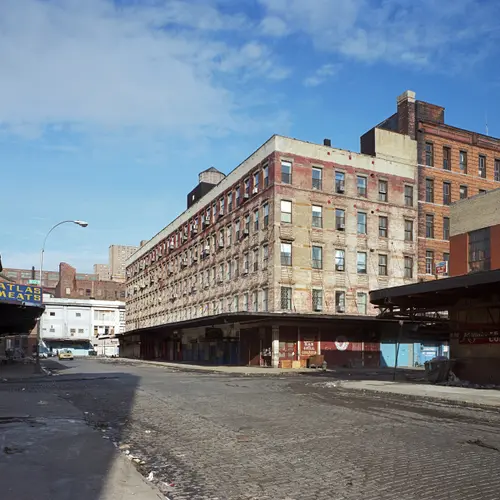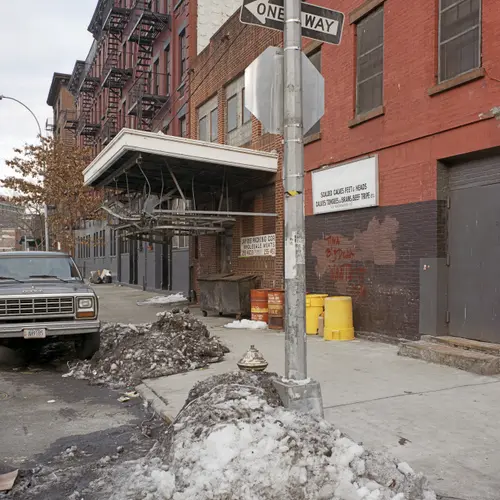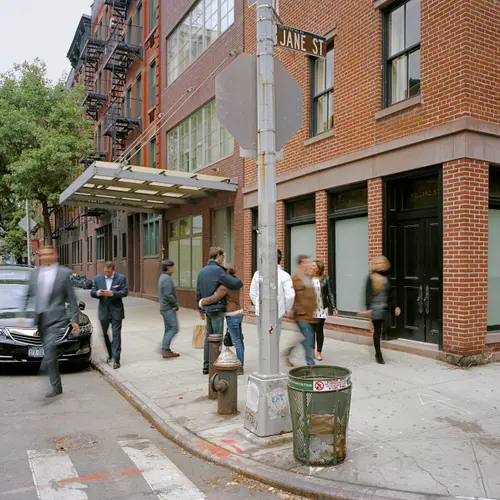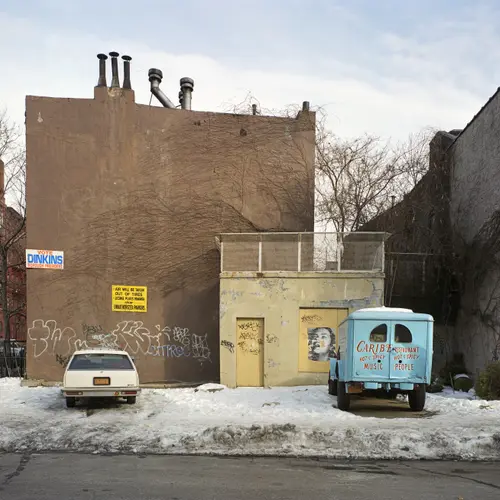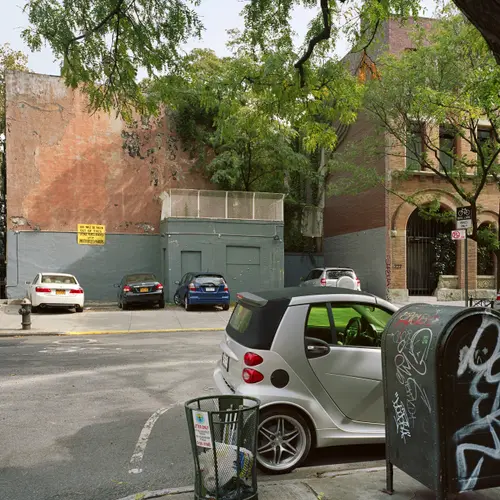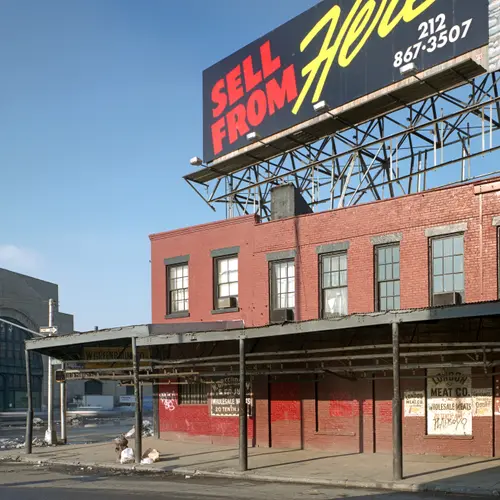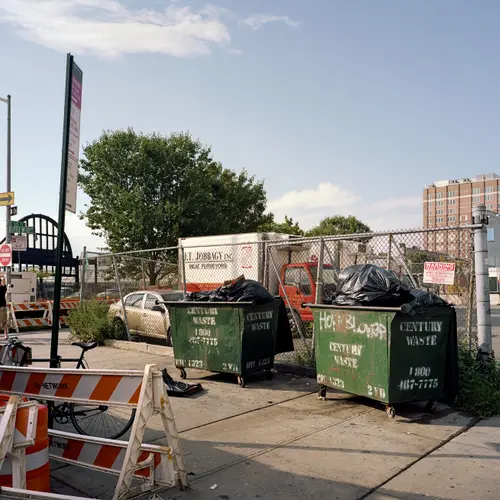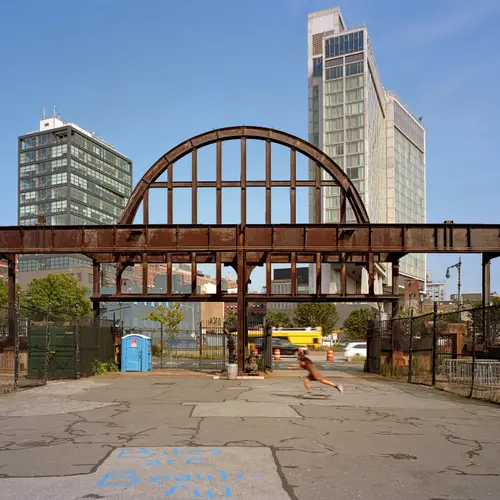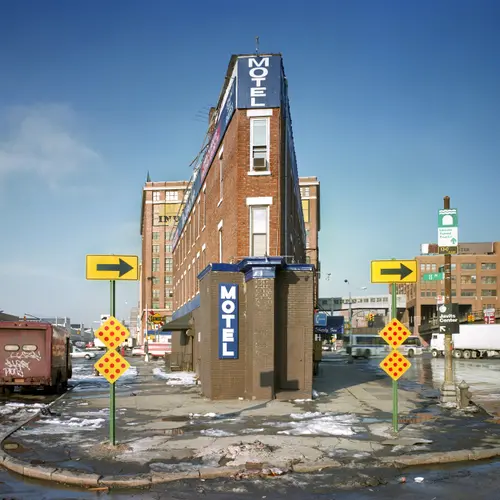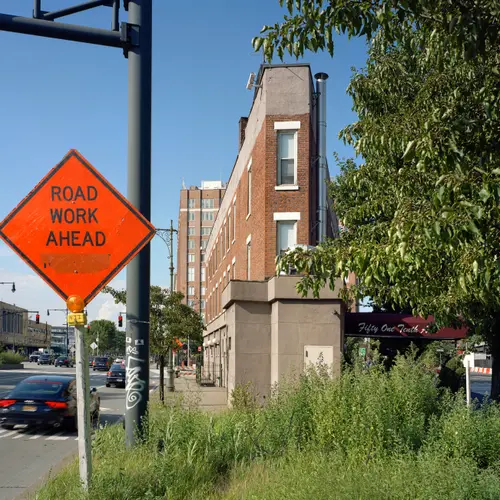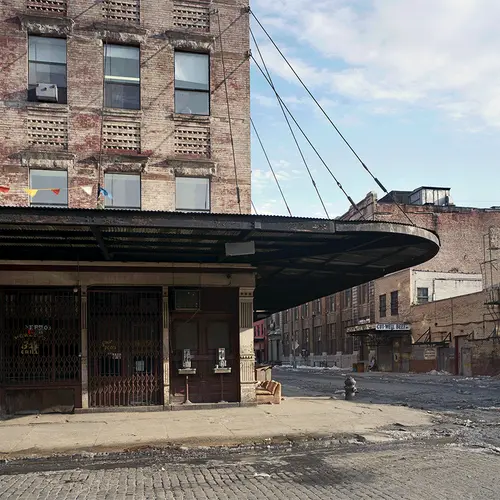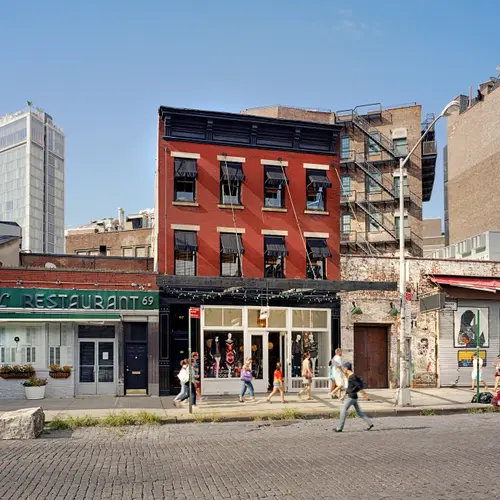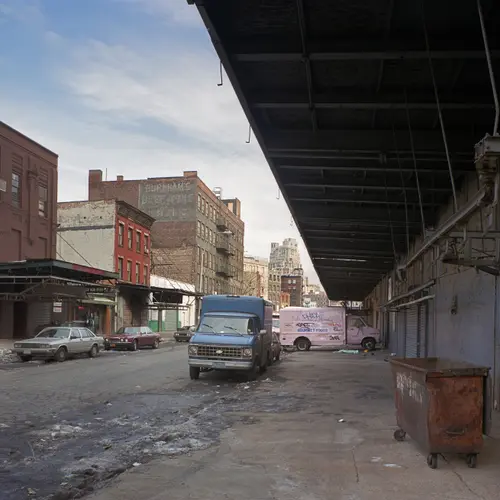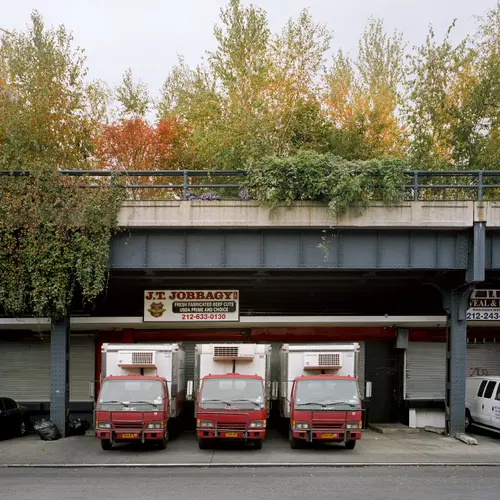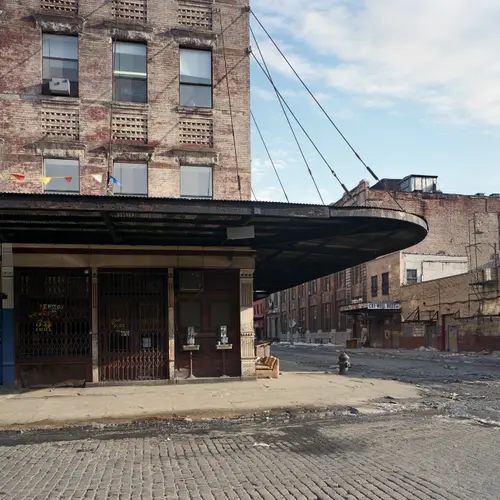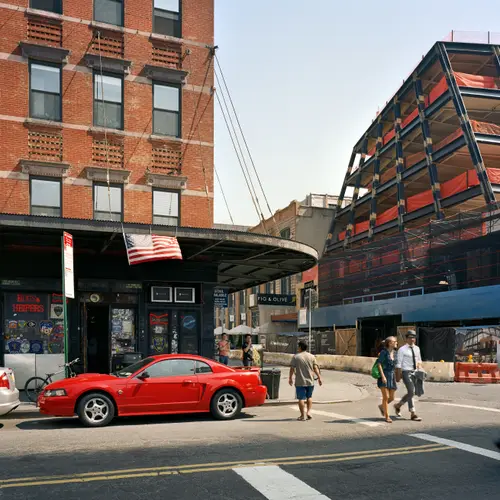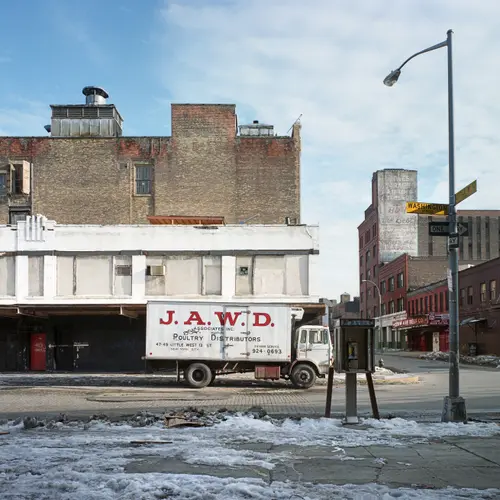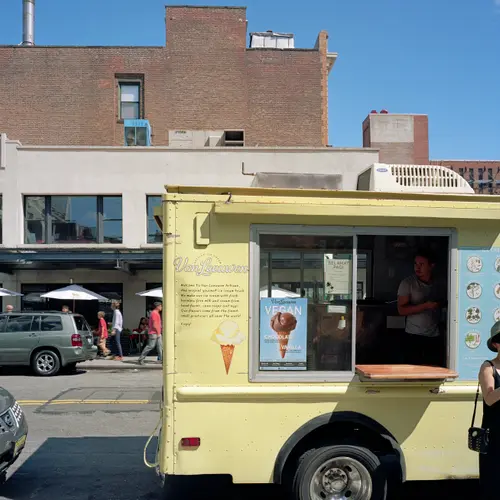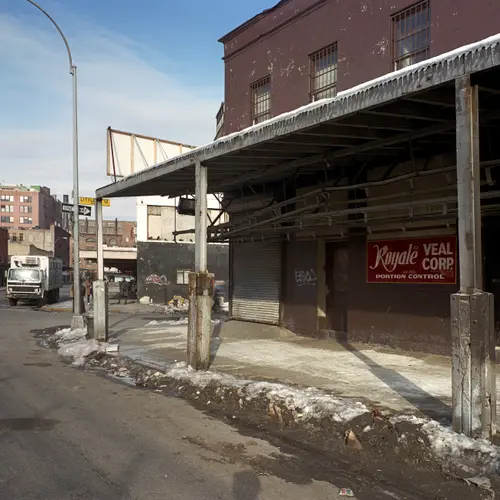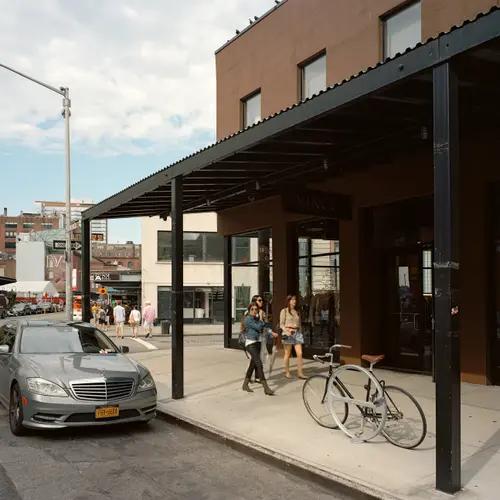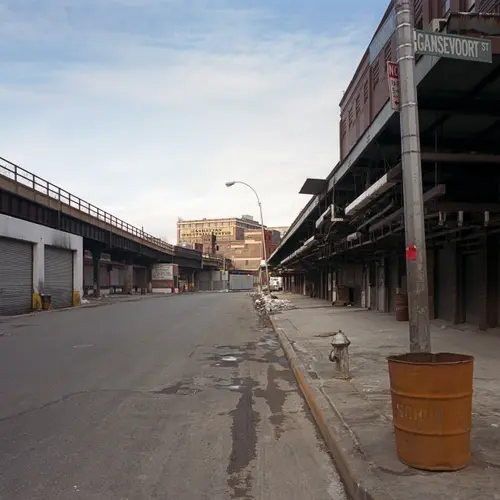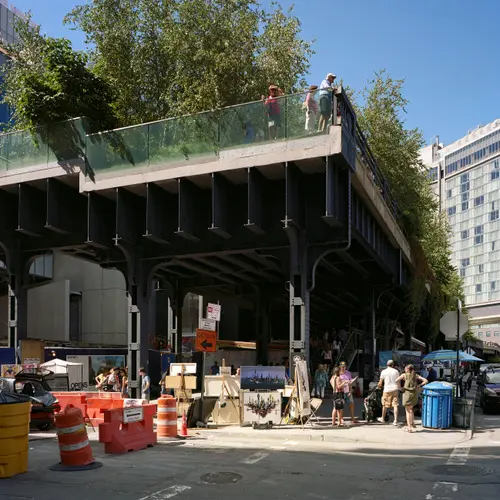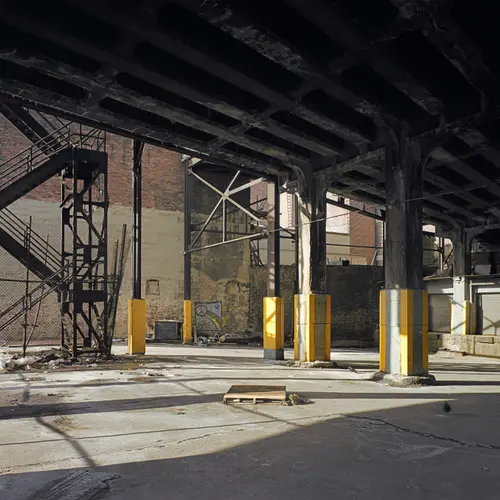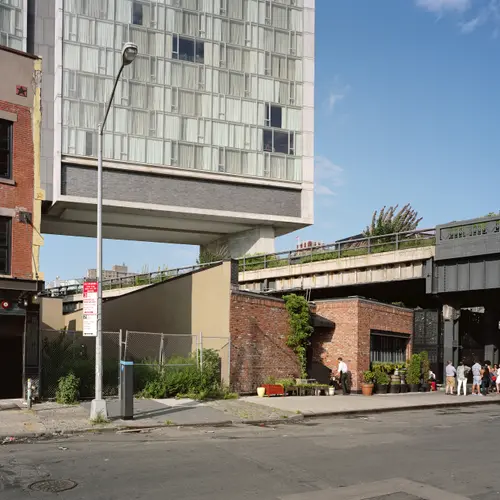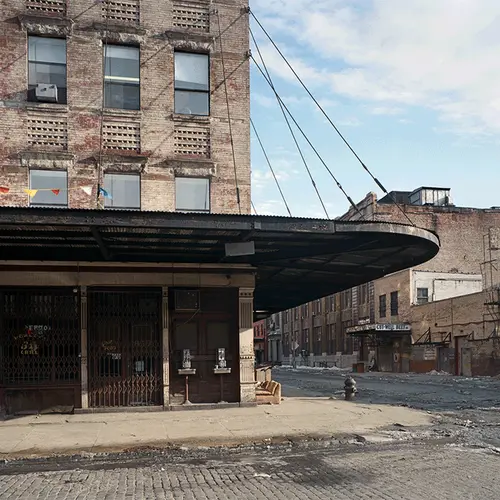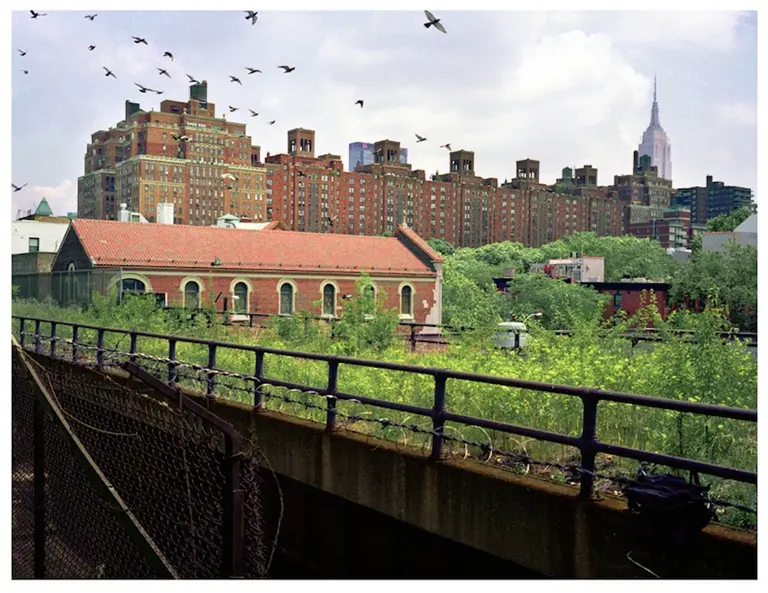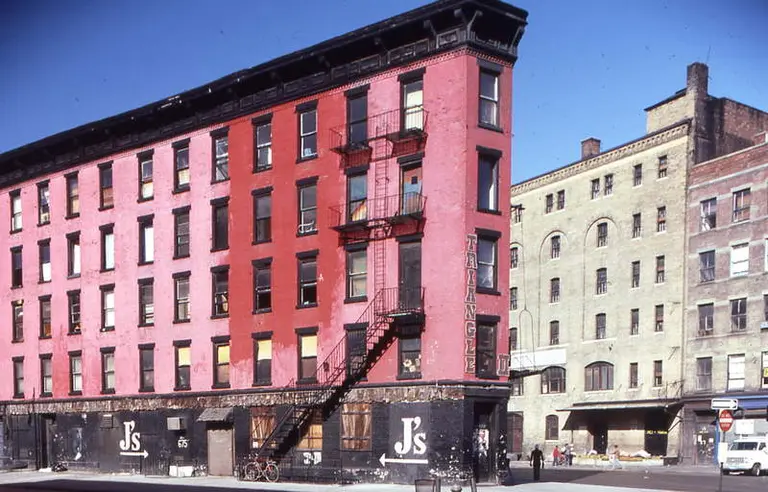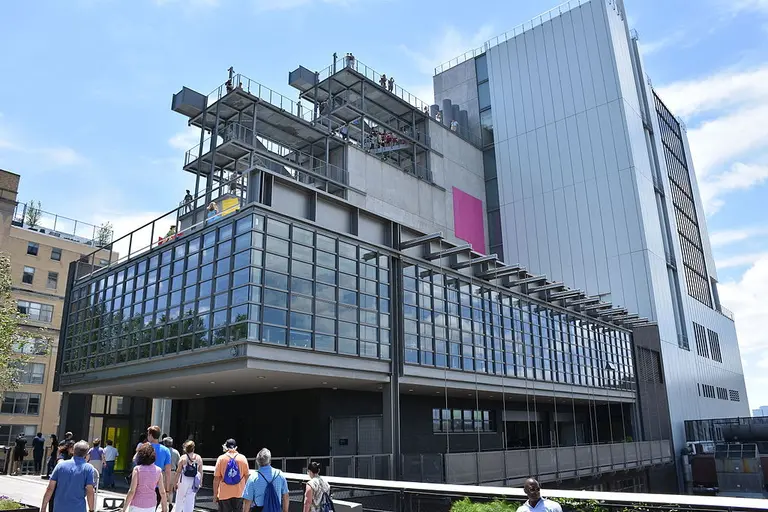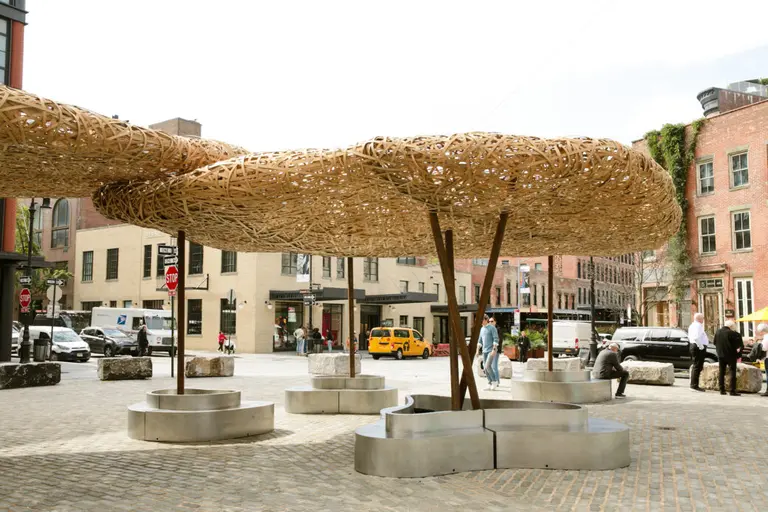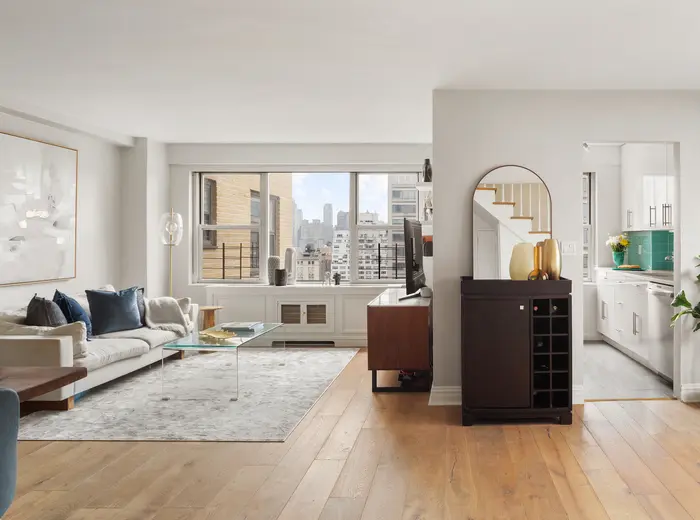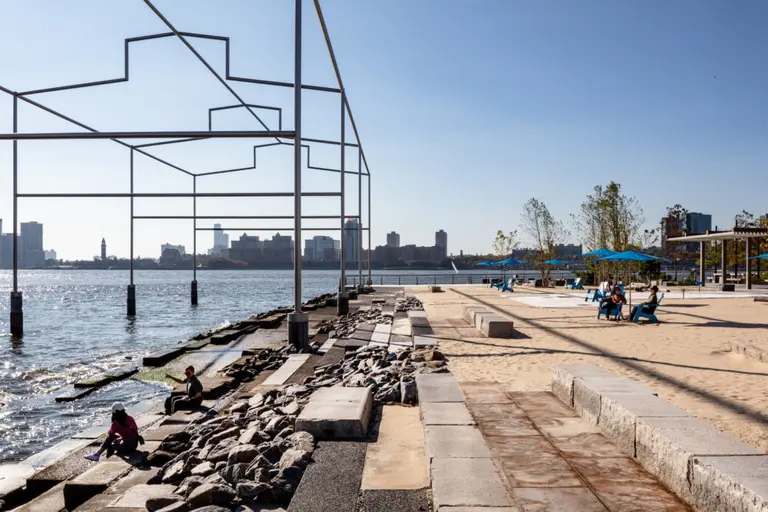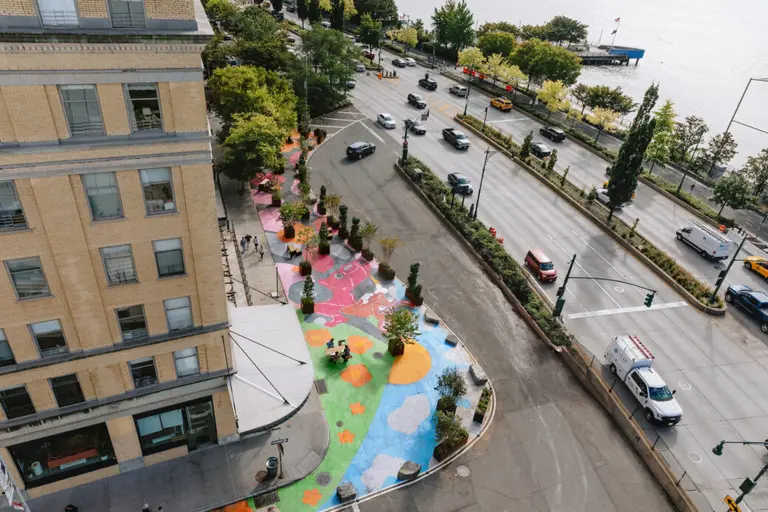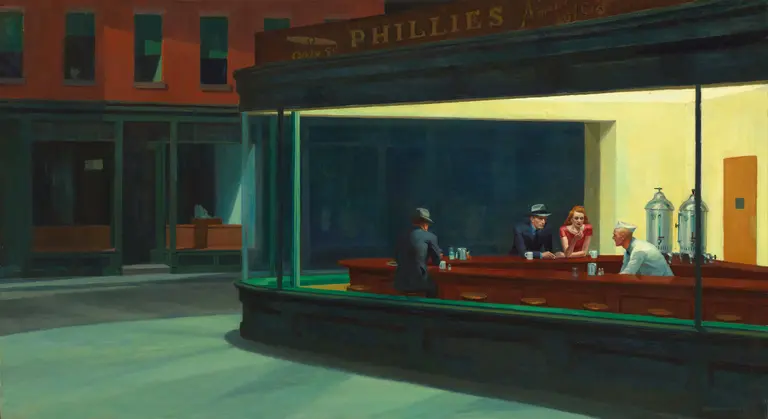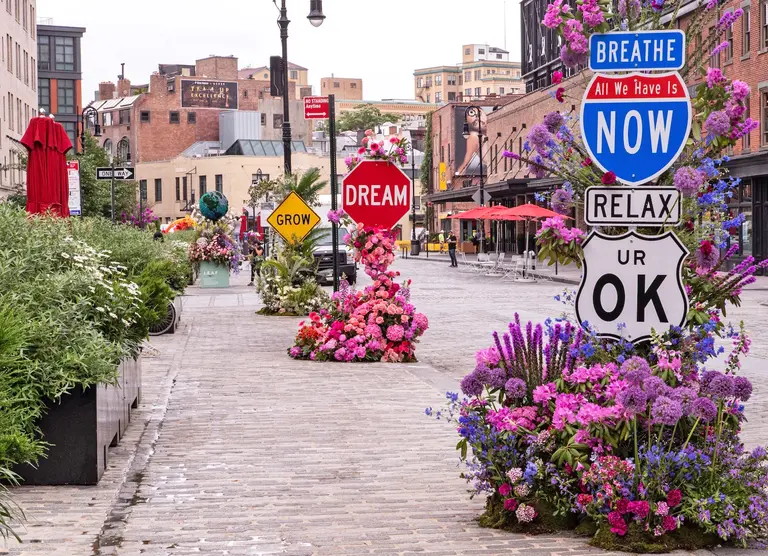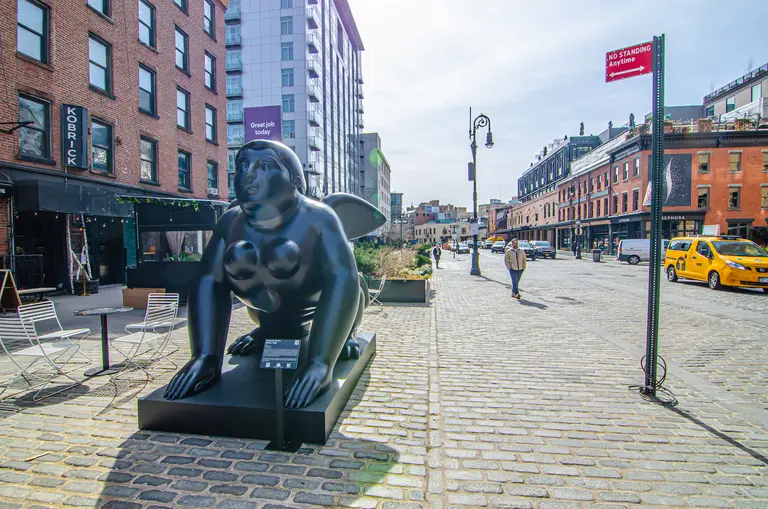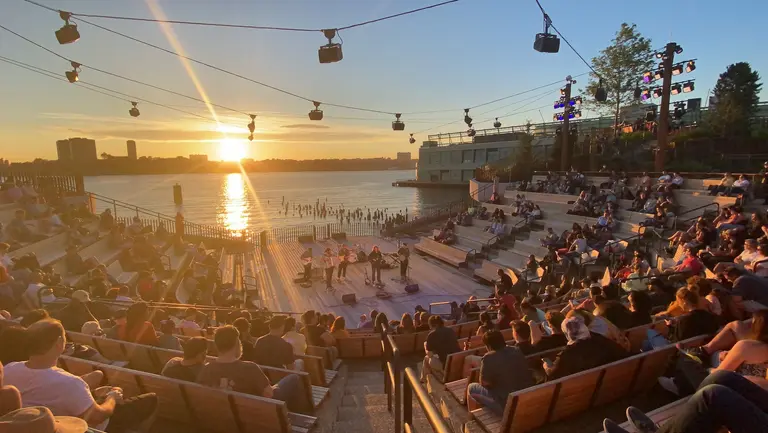See the Meatpacking District’s 20-year metamorphosis from desolate to under-construction
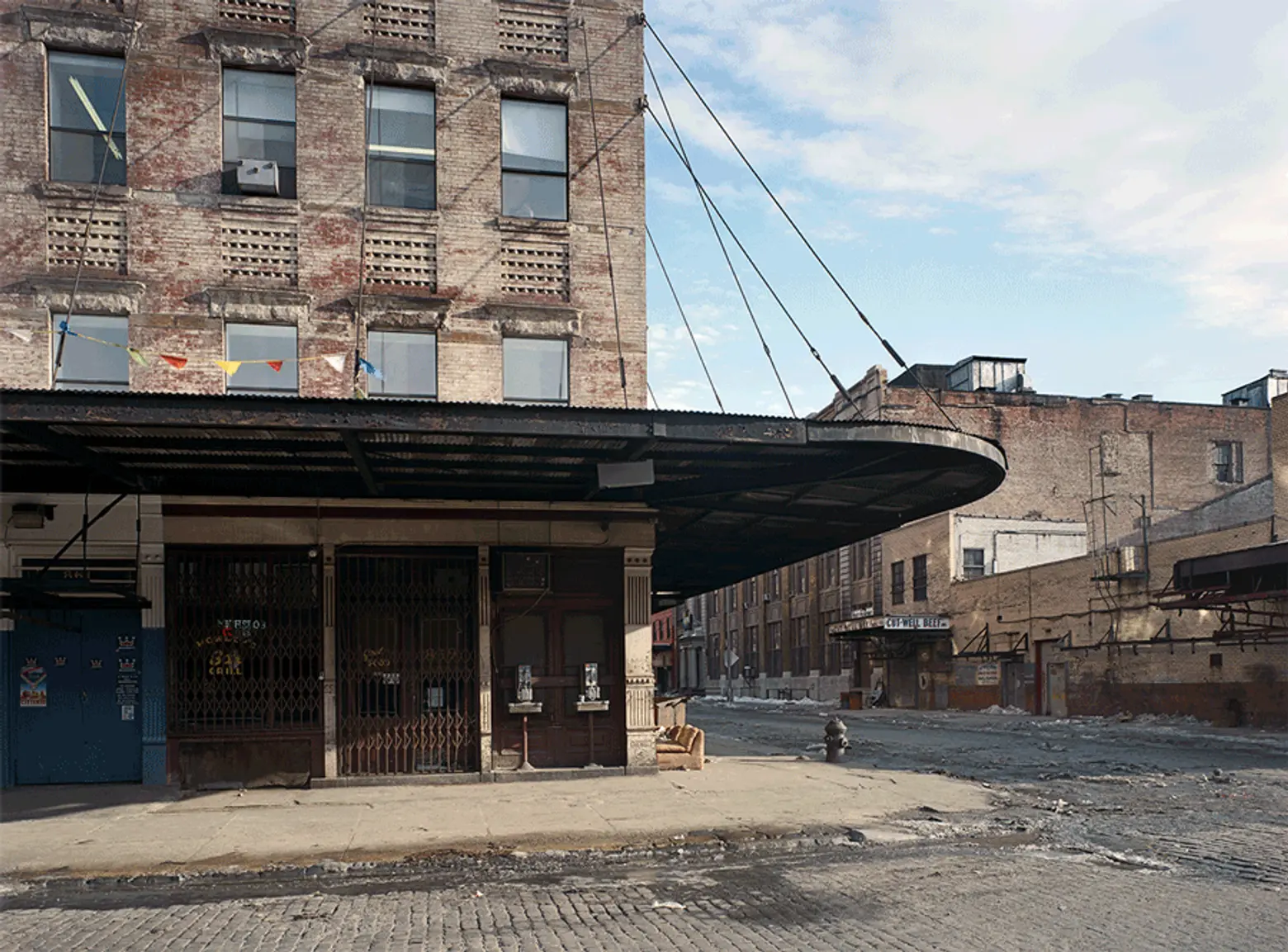
6sqft’s series The Urban Lens invites photographers to share work exploring a theme or a place within New York City. In this installment, Brian Rose shares his past and present Meatpacking streetscapes. Are you a photographer who’d like to see your work featured on The Urban Lens? Get in touch with us at [email protected].
A native of Virginia’s Colonial Williamsburg, photographer Brian Rose moved to New York City in 1977 and captured some of the most fleeting, bankrupted moments of the Meatpacking District in one January of 1985. In 2013, he returned to the neighborhood – impossibly changed – and once again photographed it. He then presented both sets of photos in his 2014 book “Metamorphosis: Meatpacking District 1985 + 2013.” Read on for an interview with Rose on old-school NYC, 9/11, and the city’s unknowable future.
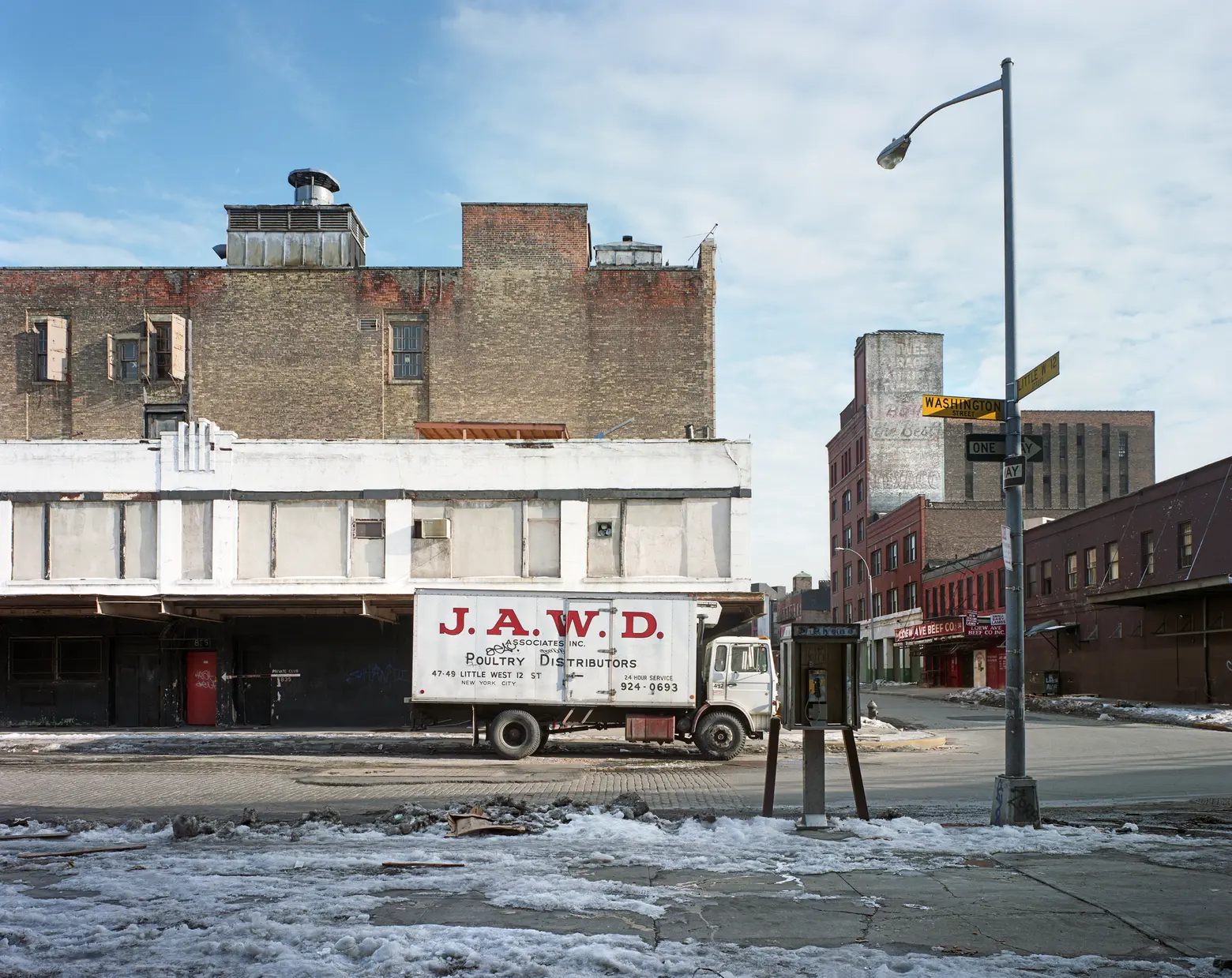
Washington and Little West 12th Streets, 1985
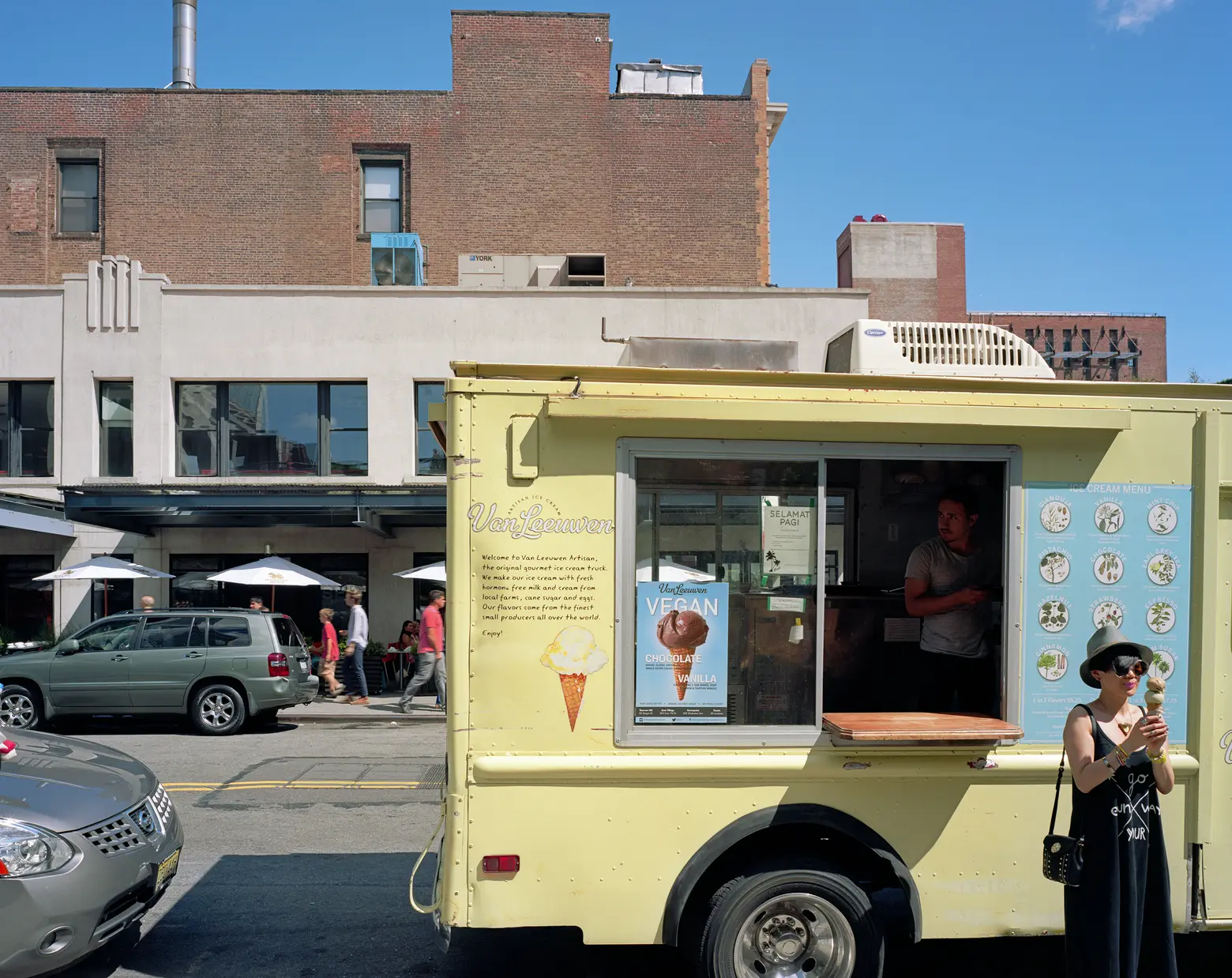
Washington and Little West 12th Streets, 2013
What made you want to photograph the Meatpacking District back in ‘85?
Well, I was at a point where I was looking for something new to photograph in New York City. I photographed the Lower East Side and I’d been photographing Central Park and various other subjects, and I was just looking for something else. It was January, it was very cold, bleak weather, and I went out with my camera for a couple of days. I’d go out for a few hours – as long as I could deal with the weather – and the reality is, I didn’t feel very inspired when I went out on those days in January in ‘85 and was thinking of other things.
Later that year, I ended up going to Europe and started photographing the former Iron Curtain and the Berlin Wall. I developed the film but I didn’t make contact prints of it, and I just left it in a box. So many, many years later after I had revisited my Lower East Side pictures and a lot of my other work from New York I went back to that box. I started scanning the film, and there was this remarkable set of pictures that just sort of appeared in front of me. I really was quite stunned. This almost completely vacant New York City – very, very beautiful in a decrepit way. It’s amazing how desolate it all looks.
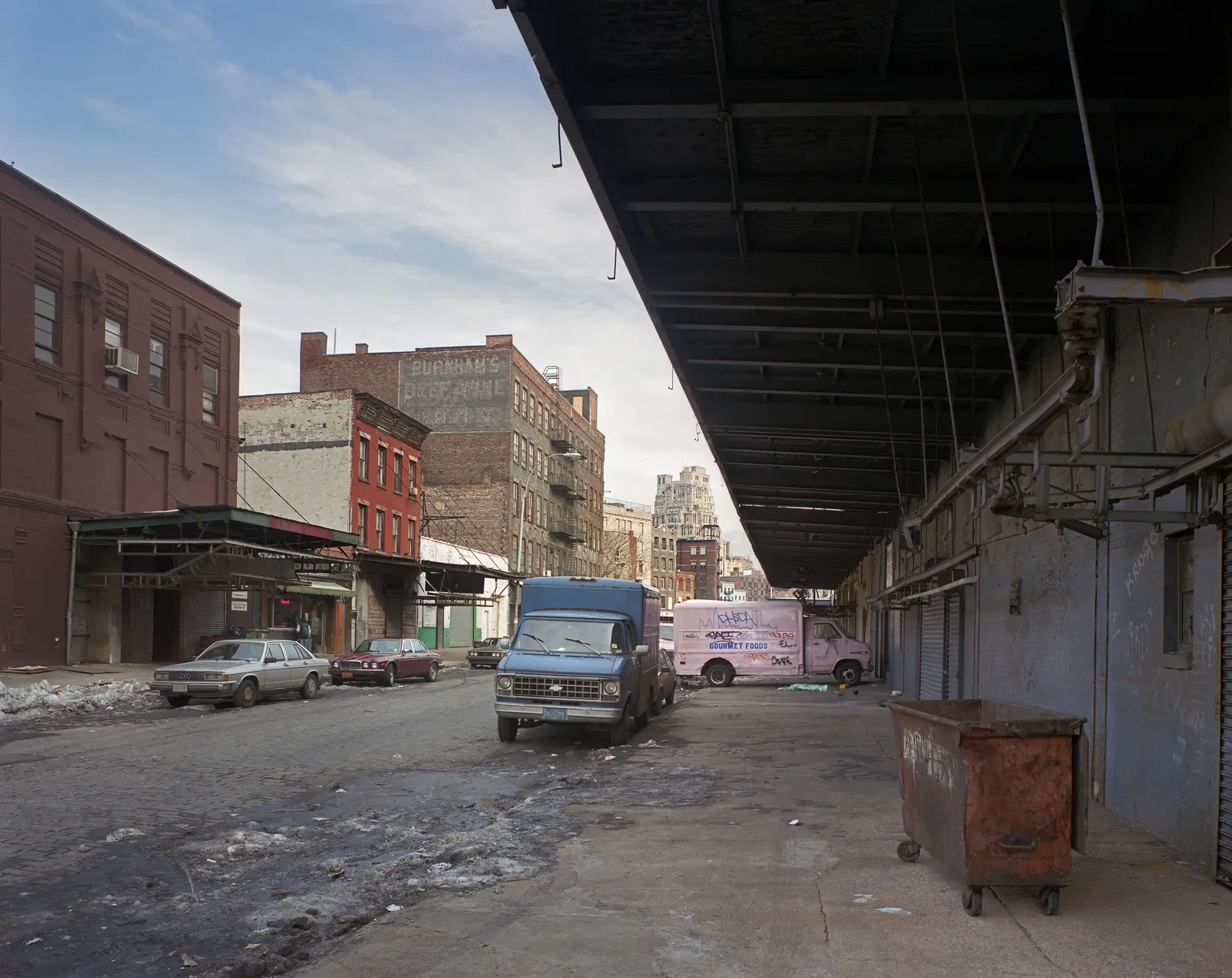 Gansevoort Street off 9th Avenue, 1985
Gansevoort Street off 9th Avenue, 1985
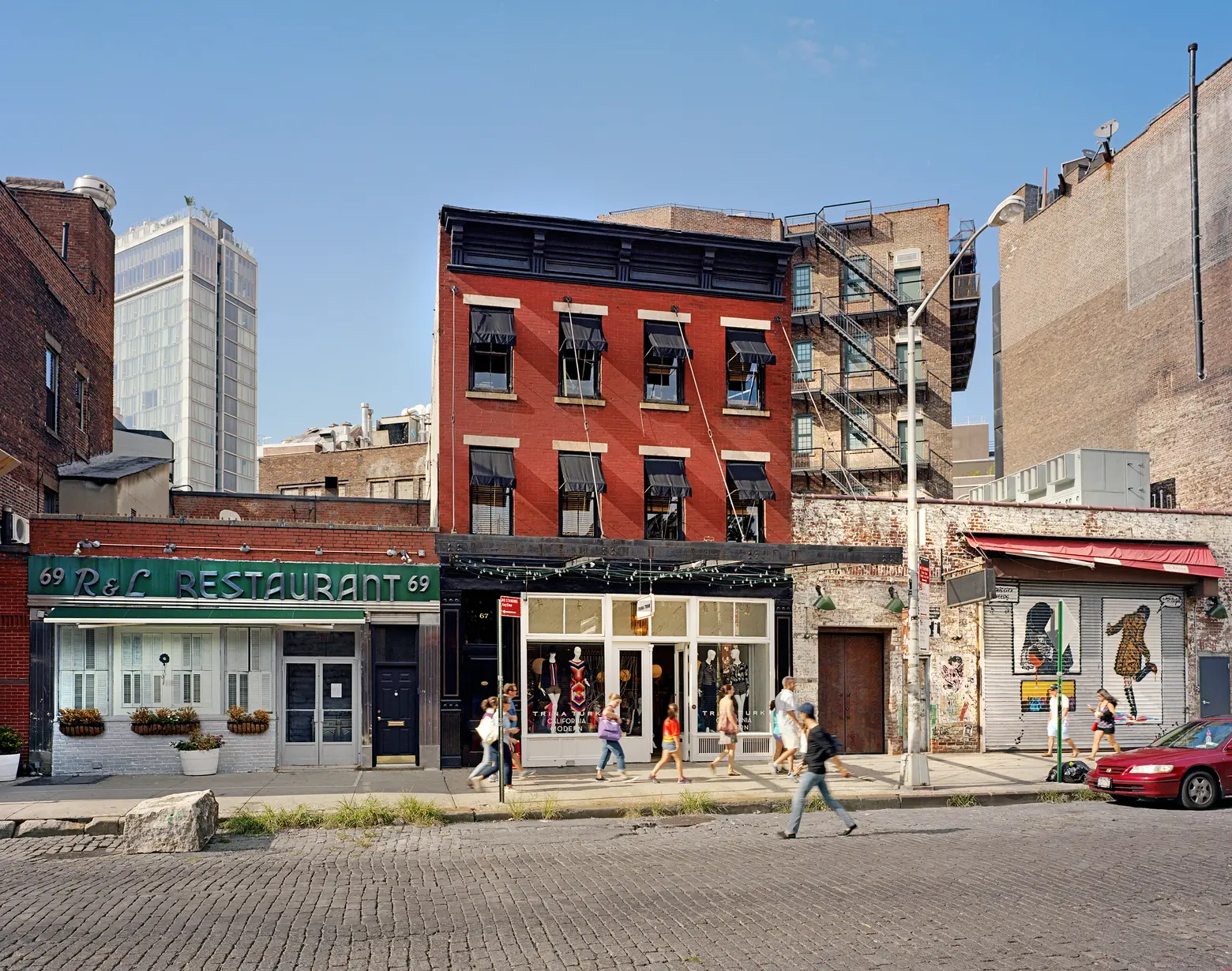 Gansevoort Street off 9th Avenue, 2013
Gansevoort Street off 9th Avenue, 2013
How did you decide to contrast your older photos with newer ones of the same locations?
I don’t want my books to only be about nostalgia and a sentimental view of New York. I want them to be about the present as much as the past. That’s how the book came about. It was really just based on a few days of shooting that didn’t really go anywhere and I wasn’t really in tune with what I was doing. But you can’t take anything for granted. It’s all going to change again and what may seem not noteworthy now may, in fact, be noteworthy later.
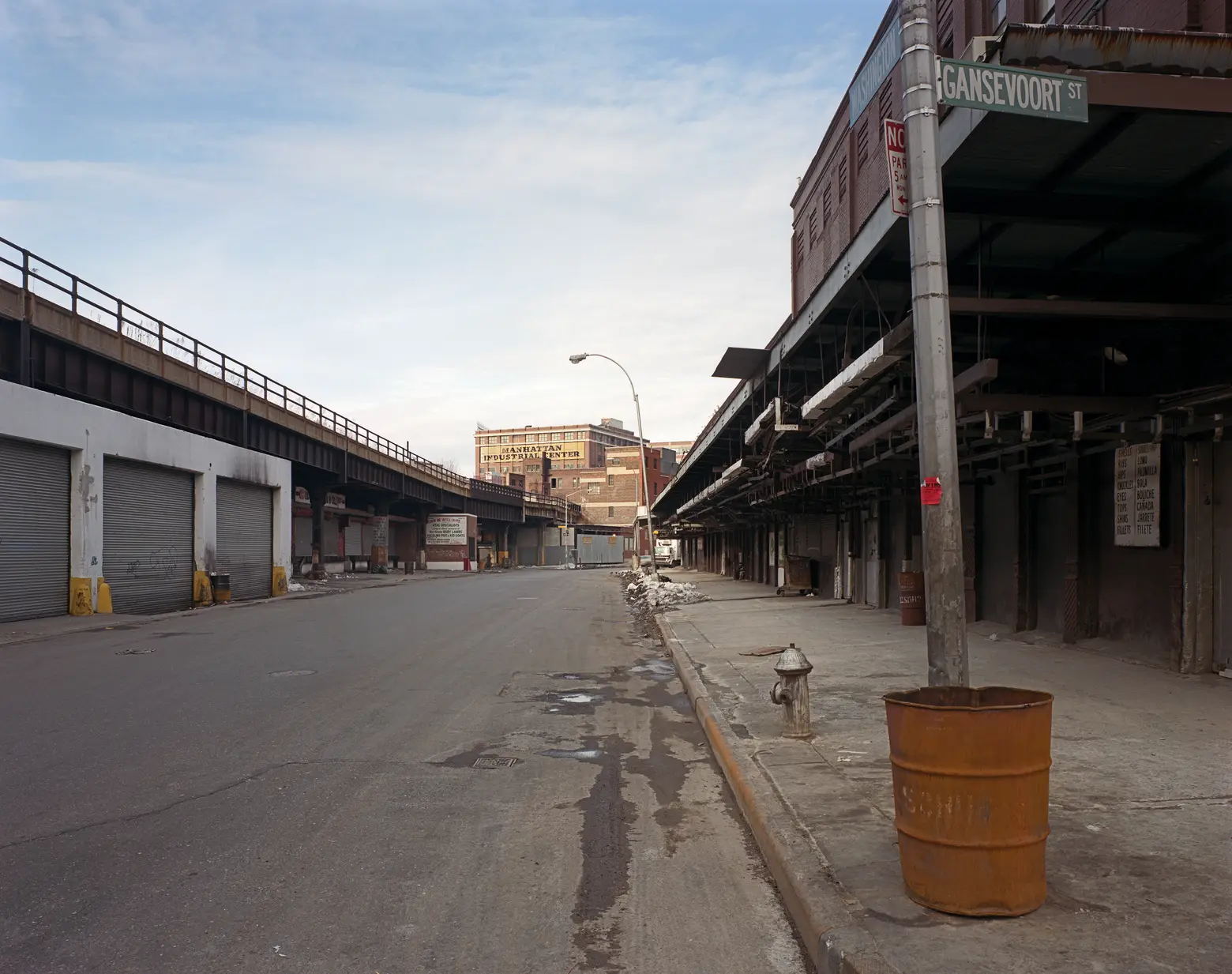
Washington and Gansevoort Street, 1985
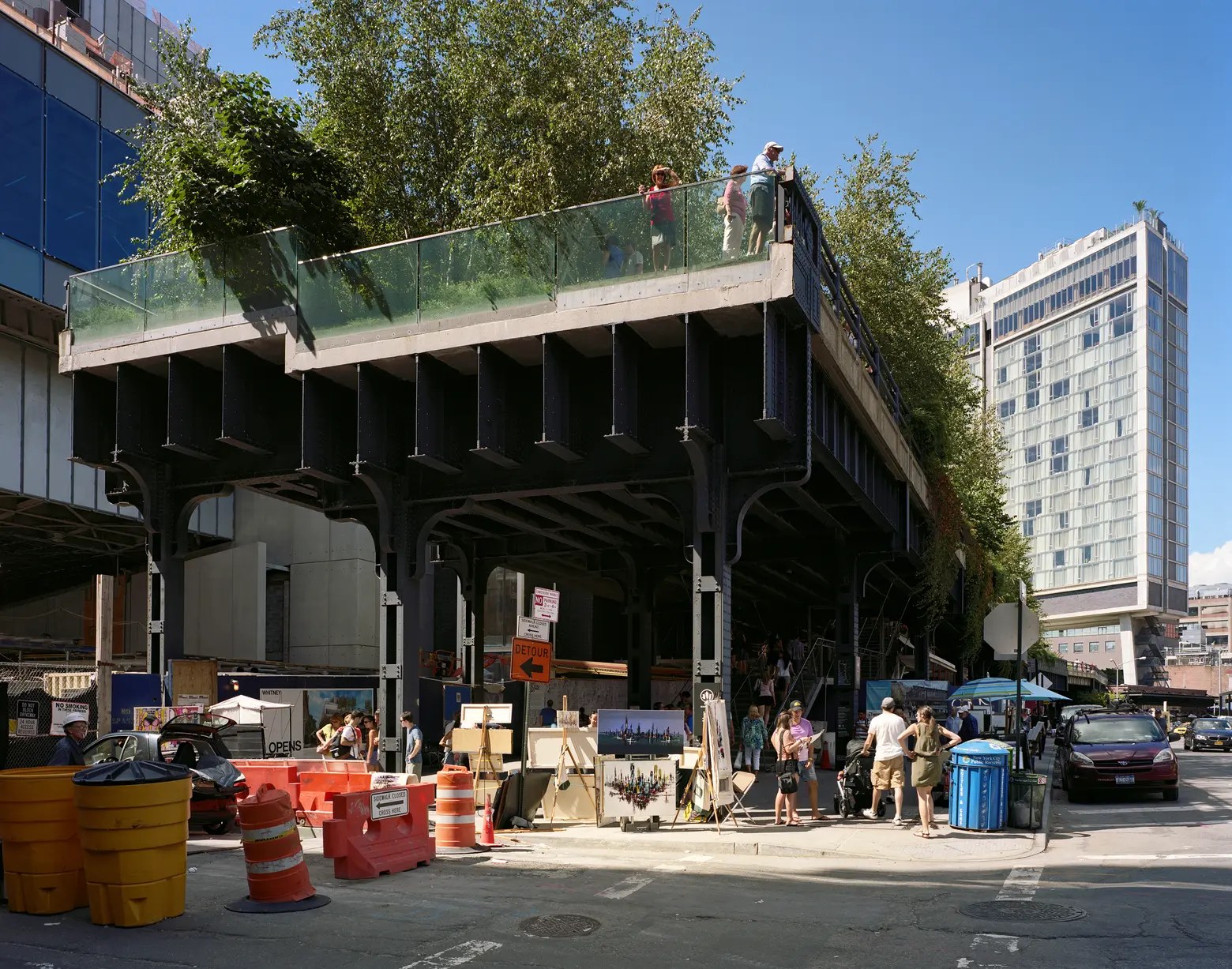
Washington and Gansevoort Street, 2013
Are you nostalgic for the New York of your ‘85 photos?
When I photographed the Lower East Side, I was aware that was a kind of moment in time – 1980, New York City. We were at a turning point but it was hard to say what that was. You can imagine a scenario where much of New York would go how things went with Detroit as opposed to what it is now, and in 1985, a few years later, that was the height of the AIDS crisis. So, you still have the city struggling, coming out of the near bankruptcy of the late ‘70s and early ‘80s, and at the same time, you have thousands of people dying, particularly in Lower Manhattan, so the feeling was not necessarily optimistic. At the same time, I was involved with a neighborhood group on the Lower East Side and we were doing all kinds of stuff to preserve the city and do what we could. I was living on East 4th Street between the Bowery and 2nd Avenue. It wasn’t until after 9/11 that I really felt I needed to re-engage with the city.
Why, what changed during 9/11 for you?
I was living part of the time in Amsterdam – my wife is from the Netherlands – and I still had a place in the city, so I could come back. I still had clients, I still had work. But I had stepped away from my photographic connection to the old neighborhoods in Lower Manhattan.
When 9/11 happened, I realized how deeply rooted and emotional I was about New York City and really wanted to get back into that connection, so that’s when that work came about and that’s when I started to re-photograph the Lower East Side. It seemed to me that was the best way I could re-engage, was to go back to the work I had done back then. So the Meatpacking photographs come out of that impulse of going back and looking at what I had done back then. It was like looking at the city, but it was also a kind of personal stepping back in my footsteps.
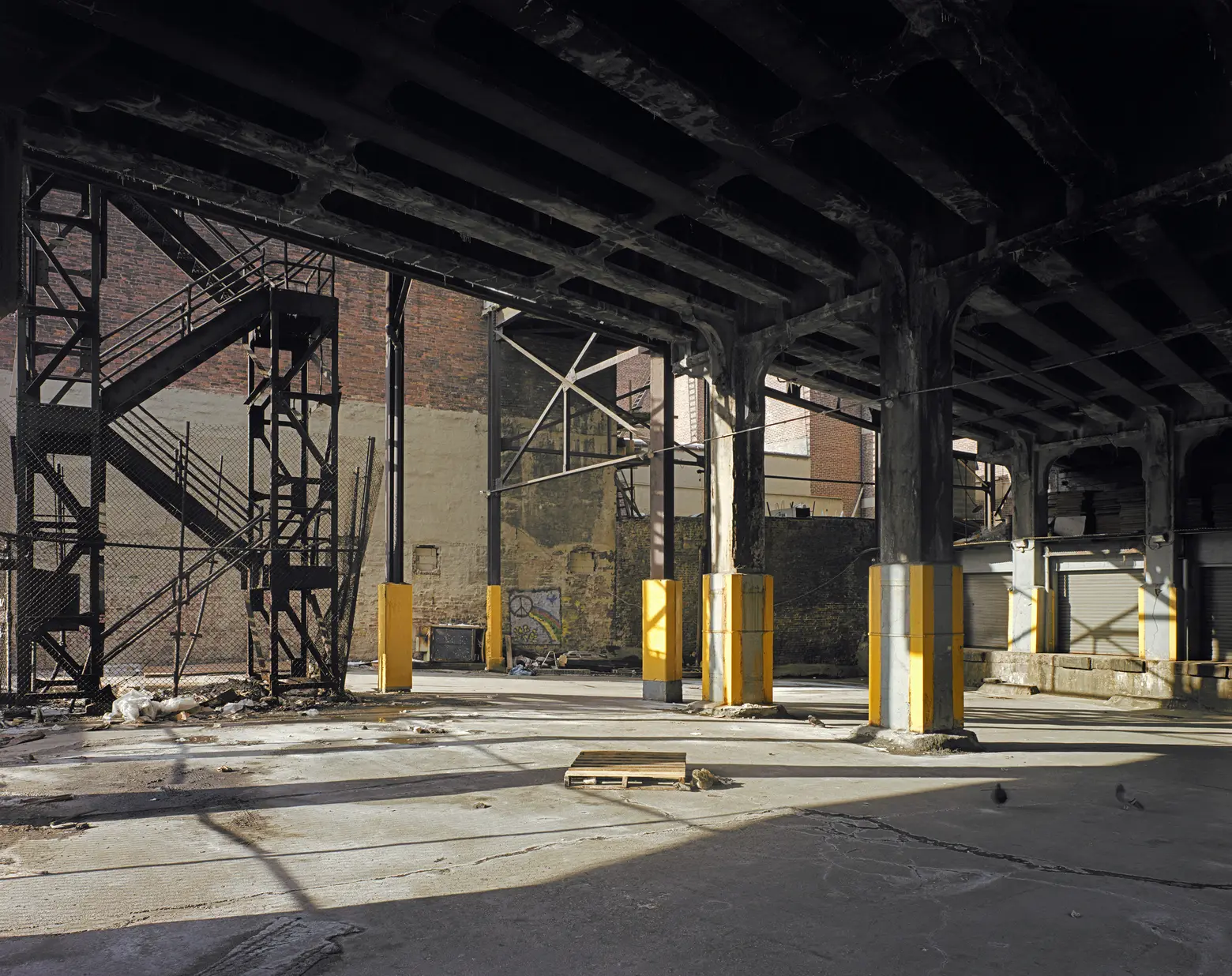
Washington and Little West 12th Streets, 1985
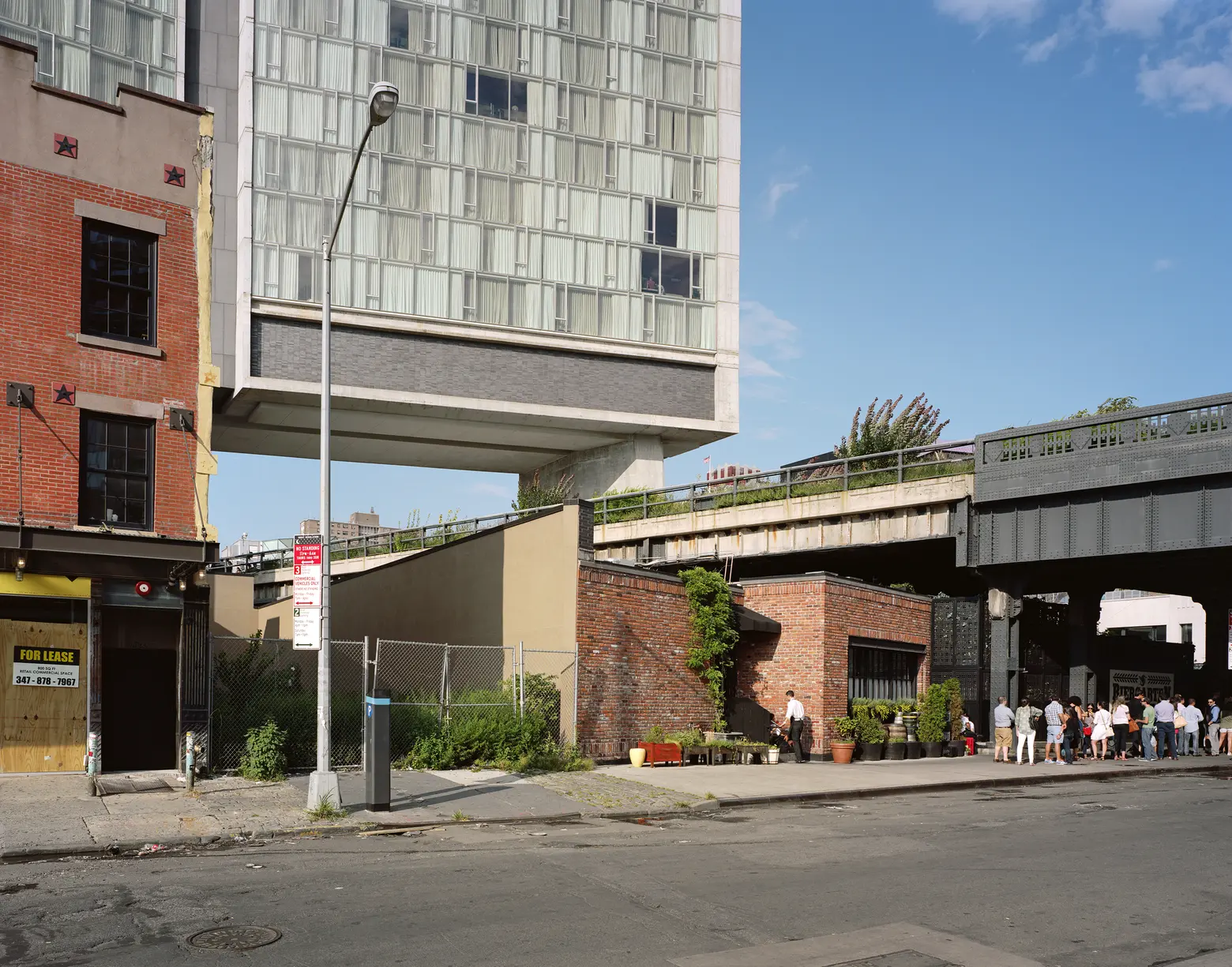
Washington and Little West 12th Streets, 2013
When did you originally get into photography?
I got a camera when I was about 16 and was really interested in it, and when I went to UVA I was in the architecture school studying urban design, but I kept coming back to wanting to take pictures. So I finally decided to go to art school and take pictures.
When you photographed Atlantic City in 2016, did it remind you of Meatpacking in ‘85?
I knew what to expect because I had been to Atlantic City years before and I kind of knew what it was like. My intention was, having read a few articles about the closings of a number of casinos, and particularly the Trump Casinos, this was a way to do something directly political but at the same time do it in the same style as work that I had been doing all along. So I got there and, using a large film camera, I started surveying the landscape in the way I had always done. Atlantic City. It’s a bizarre, strange world. It’s really his presence. It’s been there for a long time.
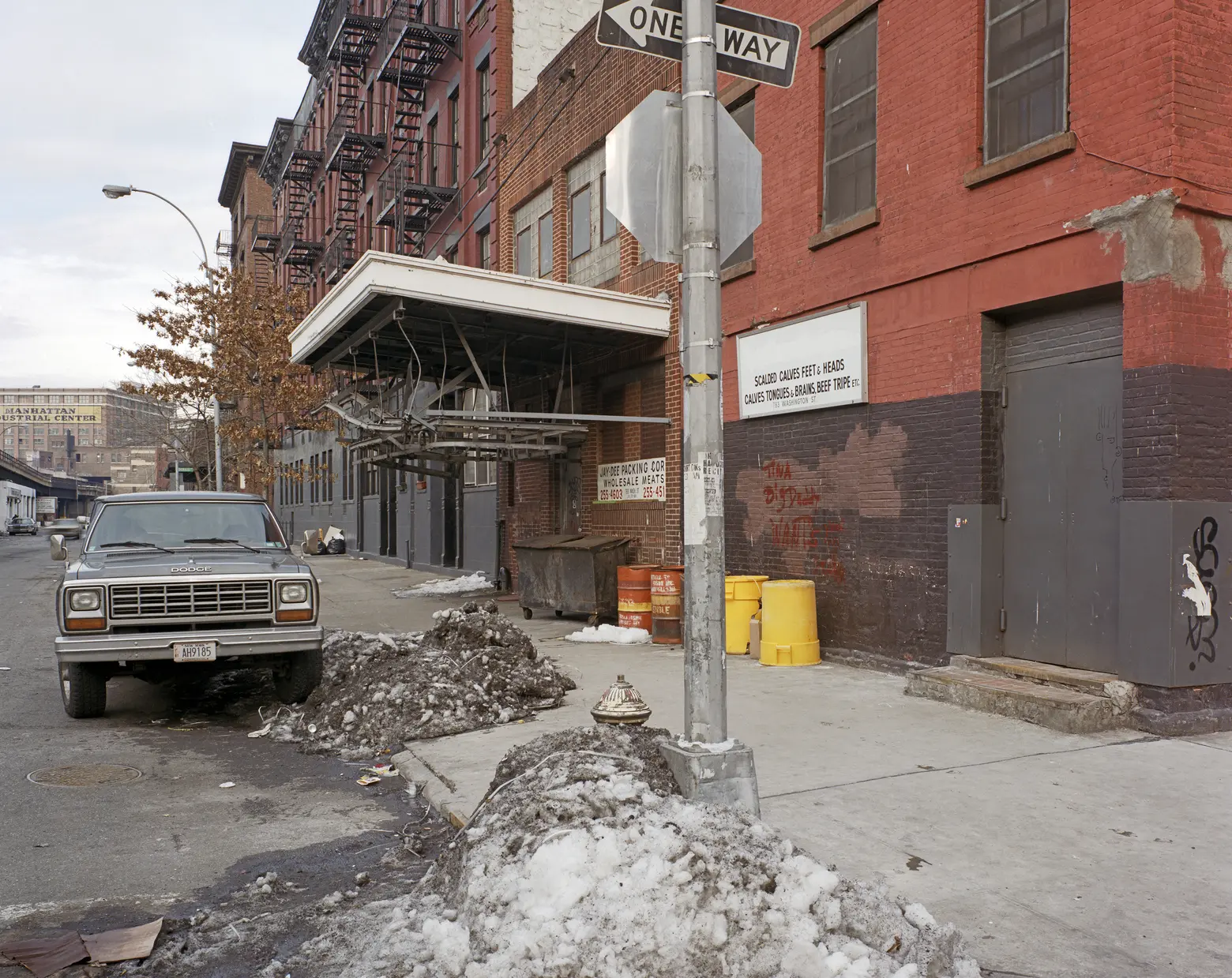
Washington and Jane Street, 1985
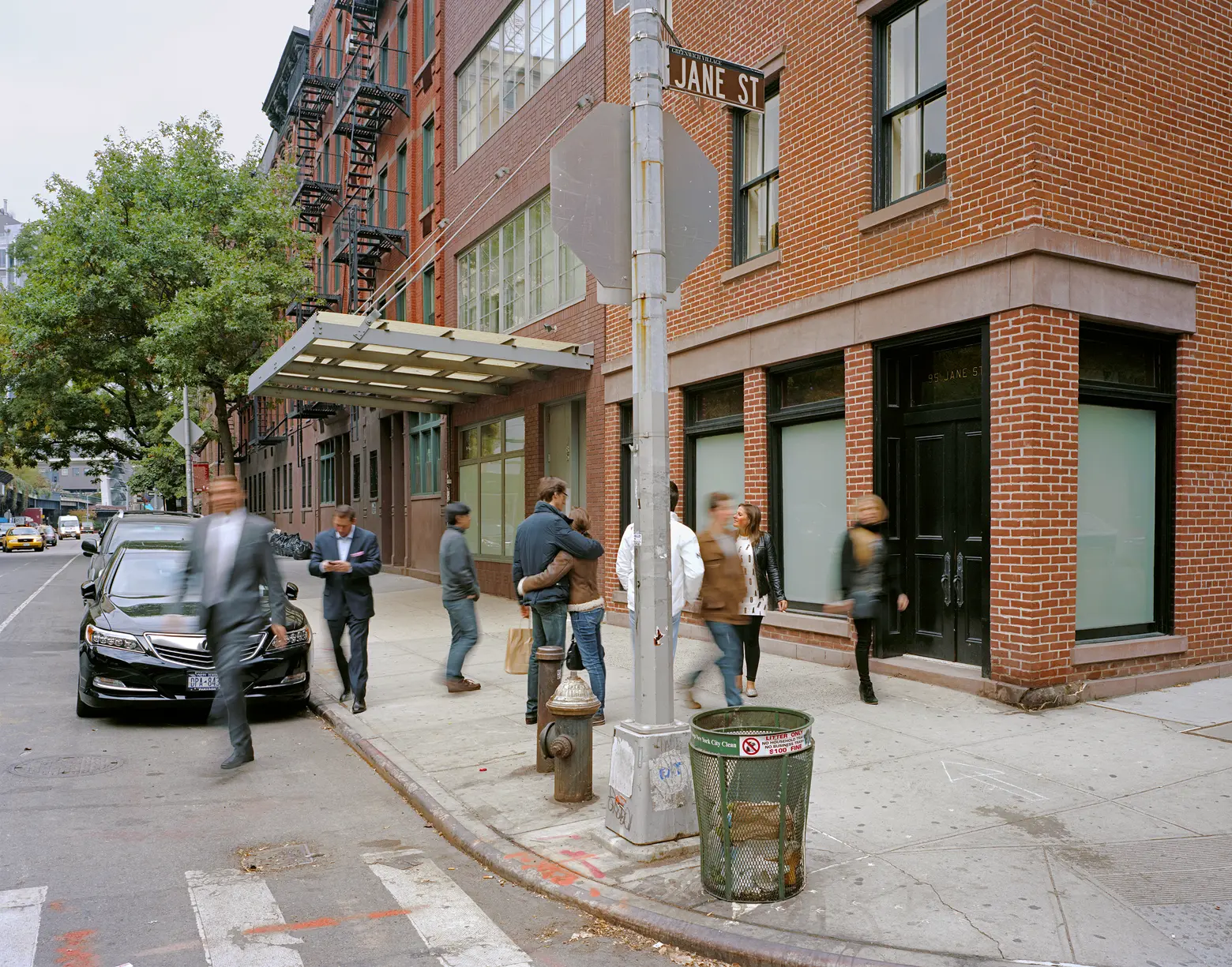
Washington and Jane Street, 2013
If you could go back to 1980s New York for one hour, what would you shoot?
I didn’t photograph the Soho and Tribeca areas very much. I think that would’ve been really interesting to have a series of pictures of those neighborhoods when they were really quite emptied out and artists were just beginning to move into the lofts.
Generally, what draws you to specific neighborhoods?
I was living [on the Lower East Side] on East 4th Street; I’d gone to school at Cooper Union so I had found an apartment close to the school. That was how I first got interested in the neighborhood–as a historic place. On the one hand, it was crumbling and there were fires. On the other hand, I was well aware of this activity going on. I was a participant in it. I was aware of the neighborhood activists and was a participant in that. The idea of photographing the Lower East Side really resonated with me at that time
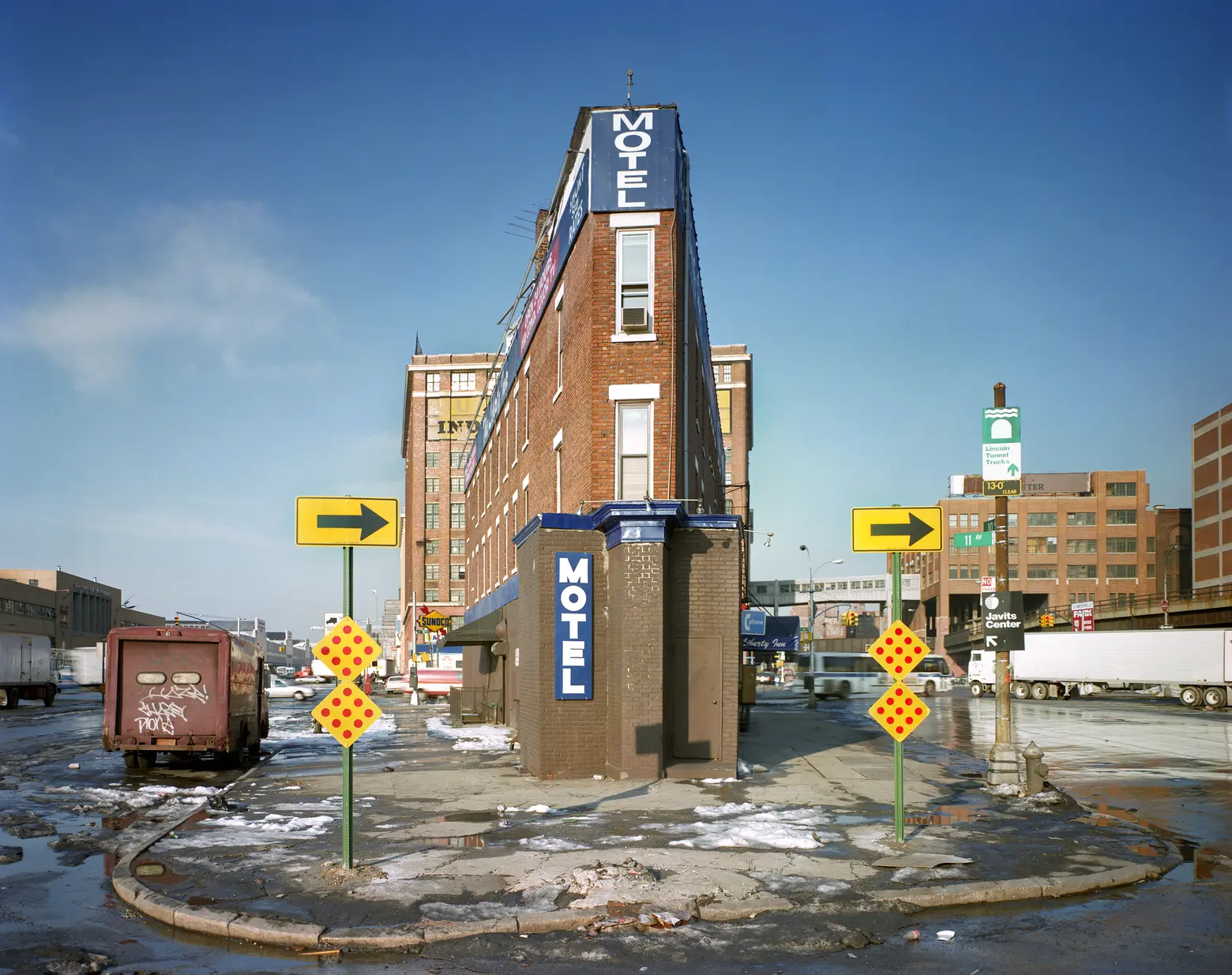
Tenth and Eleventh Avenues, 1985
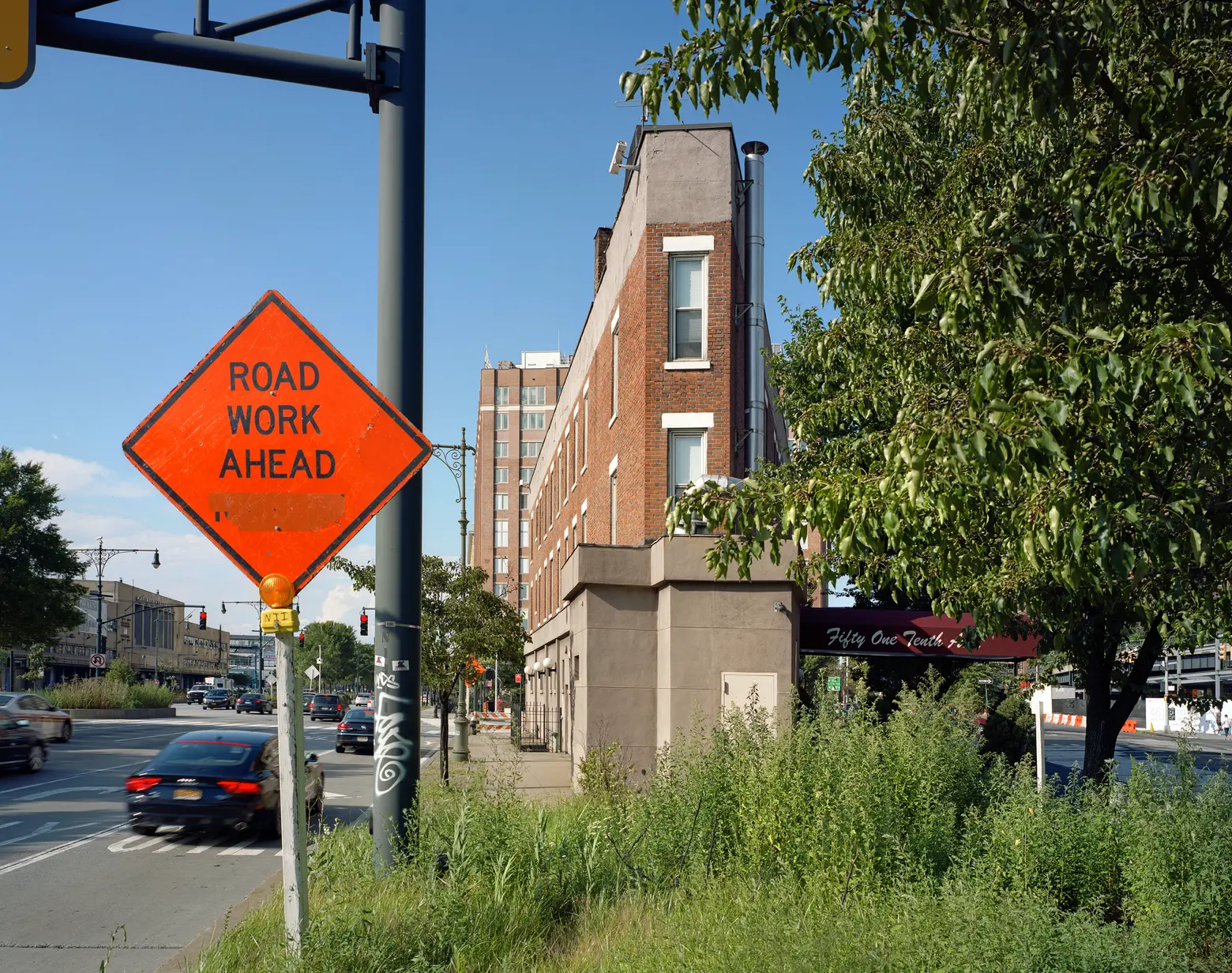
Tenth and Eleventh Avenues, 2013
Who are some of your favorite fellow photographers of New York in the ‘80s?
When I came to New York I was coming specifically because I knew Joel Meyerowitz was teaching at Cooper Union and I wanted to do color photography and he was one of the only people doing it, and I was familiar with his street photography images of Manhattan, so that was something that appealed to me a lot.
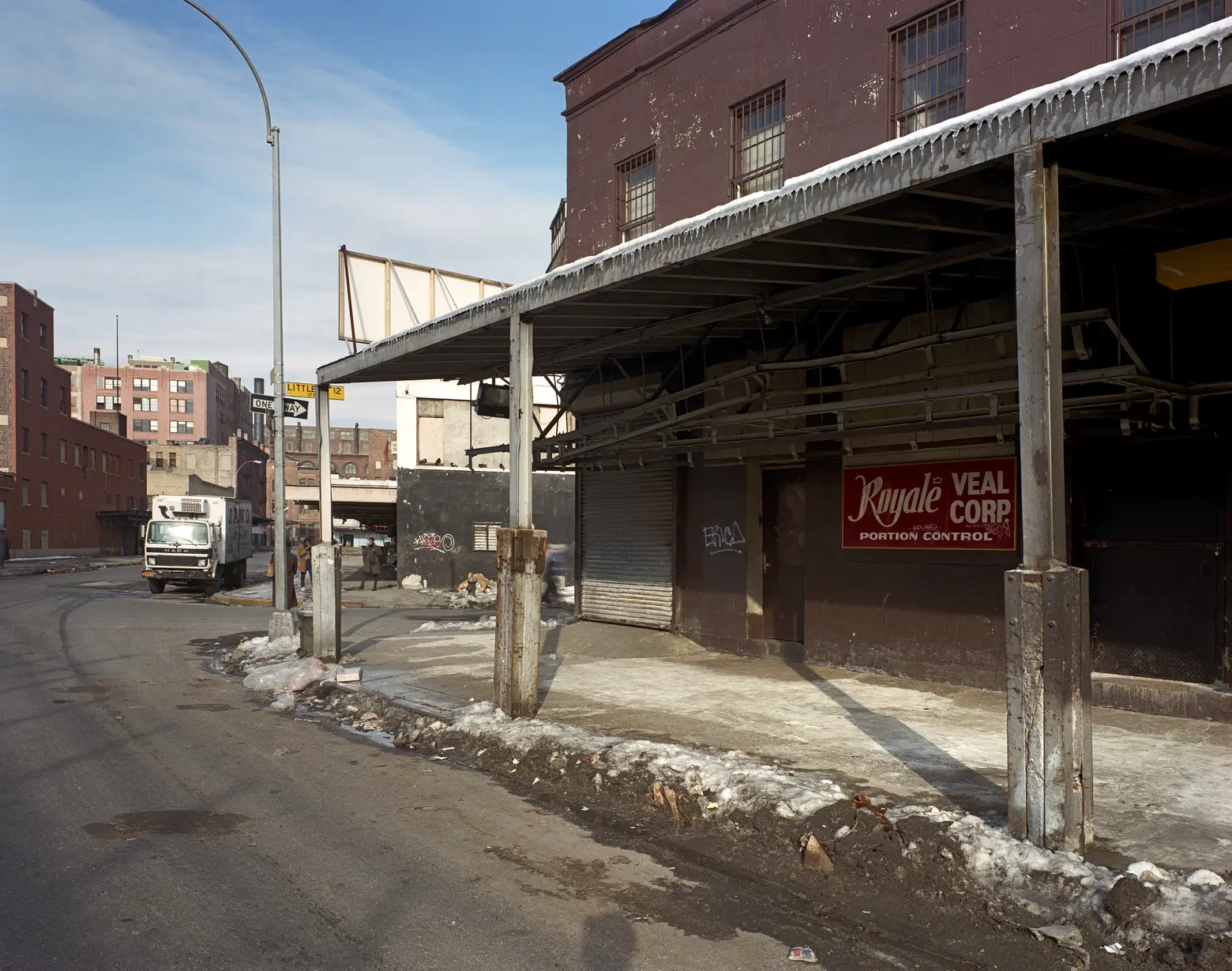 Washington and Little West 12th Streets, 1985
Washington and Little West 12th Streets, 1985
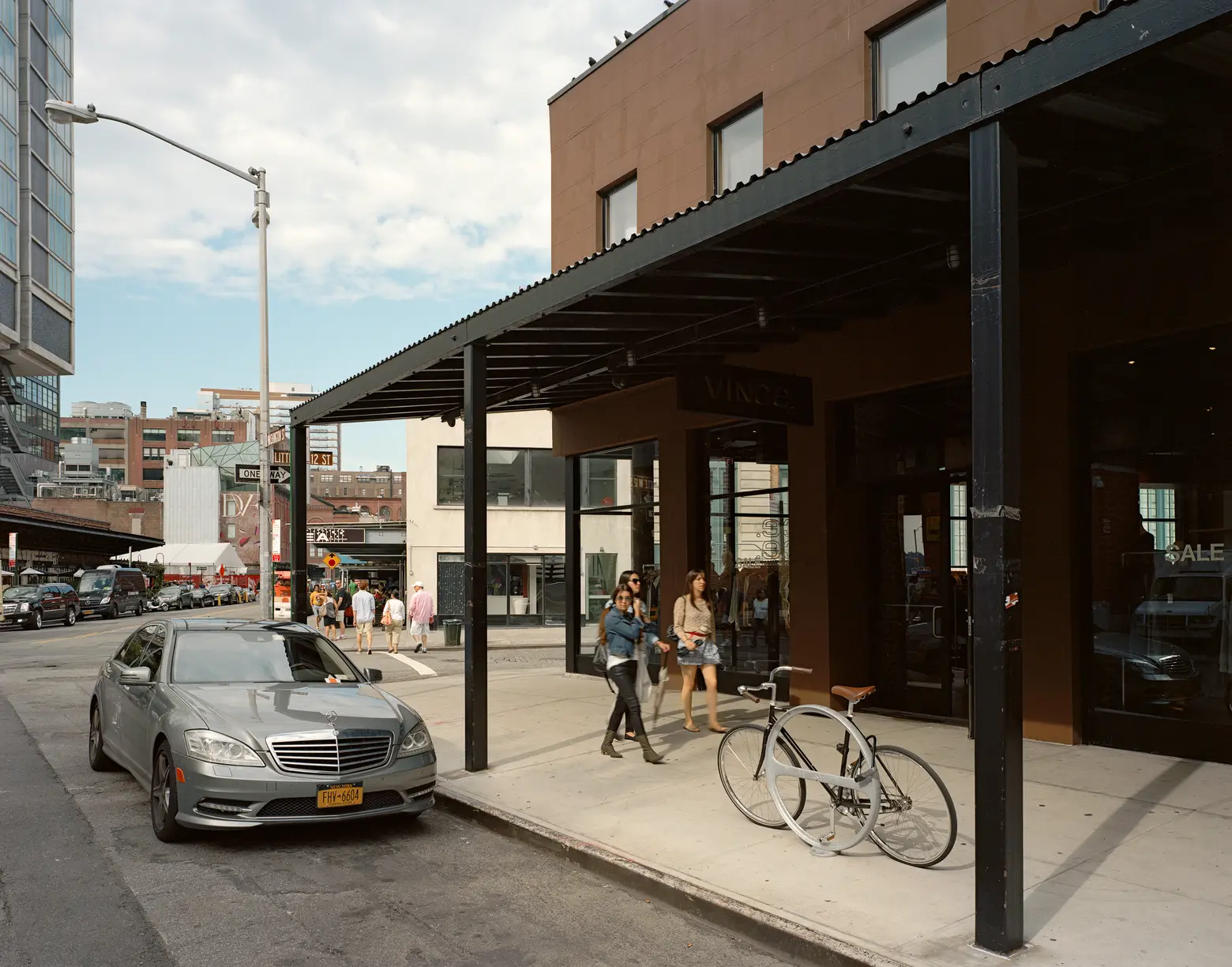 Washington and Little West 12th Streets, 2013
Washington and Little West 12th Streets, 2013
How did the experience of photographing Meatpacking in 1980 and in 2013 compare?
The Meatpacking District, of course, had changed profoundly. Other places changed more gradually. If you look at the Lower East Side, it was really over a couple of decades that you see money moving into the neighborhood. The Meatpacking District for a long, long time resisted that change and I think it was primarily because the meatpacking business was smelly and messy and you couldn’t really live there. For most people, this was too much to overcome, and at some point, the meatpackers started to move up to the Bronx where there were more modern, refrigerated facilities and big trucks could come and go. At that point, it was very sudden. As soon as the meat businesses moved out, you had this empty neighborhood, and then some of the fashion businesses started to move in.
You have a tremendous churn in recent years of businesses coming and going. So when I photographed the neighborhood in 2013 it was this extremely busy place with a lot of tourists but also, now, a lot of businesses that had moved into the buildings. Google had bought the former Port Authority building and Chelsea Market was now there, and lots of high tech businesses in the smaller buildings. The change from 1985 to 2013 was about as dramatic as you could imagine.
You don’t know where New York is going to go. I’m not convinced that anything is static. I think everything is always in flux. We don’t know where we’re going
RELATED:
- The Urban Lens: Abandonment and decay along the 1970s Greenwich Village waterfront
- The Urban Lens: Wayne Sorce’s vivid photos capture the spirit of 1970s and ’80s NYC
- The Urban Lens: Documenting the change in Tribeca from the early 1900s to present day
All photographs © Brian Rose
